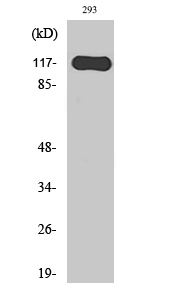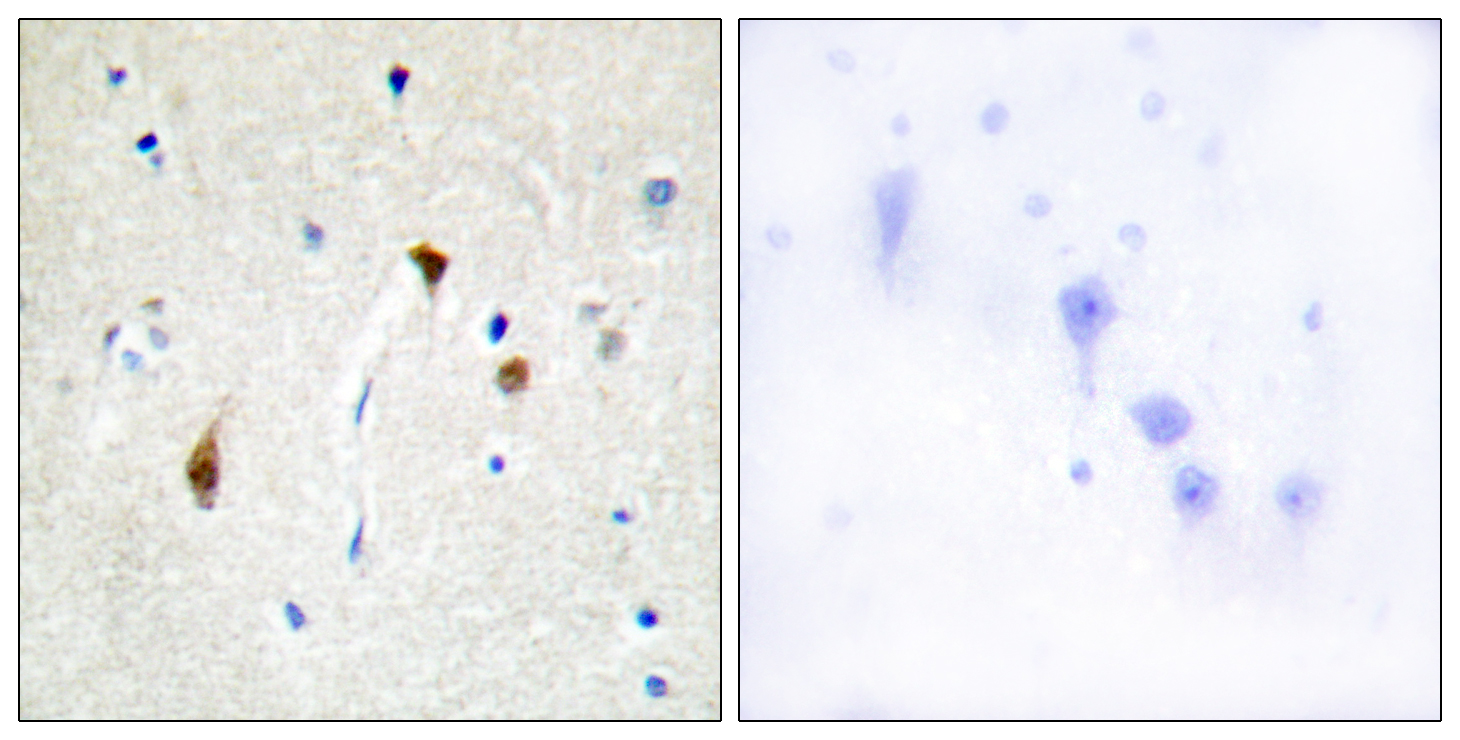Hairless Polyclonal Antibody
- Catalog No.:YT2098
- Applications:WB;IHC;IF;ELISA
- Reactivity:Human;Rat;Mouse;
- Target:
- Hairless
- Gene Name:
- HR
- Protein Name:
- Protein hairless
- Human Gene Id:
- 55806
- Human Swiss Prot No:
- O43593
- Mouse Swiss Prot No:
- Q61645
- Immunogen:
- The antiserum was produced against synthesized peptide derived from human HAIR. AA range:41-90
- Specificity:
- Hairless Polyclonal Antibody detects endogenous levels of Hairless protein.
- Formulation:
- Liquid in PBS containing 50% glycerol, 0.5% BSA and 0.02% sodium azide.
- Source:
- Polyclonal, Rabbit,IgG
- Dilution:
- WB 1:500 - 1:2000. IHC 1:100 - 1:300. IF 1:200 - 1:1000. ELISA: 1:10000. Not yet tested in other applications.
- Purification:
- The antibody was affinity-purified from rabbit antiserum by affinity-chromatography using epitope-specific immunogen.
- Concentration:
- 1 mg/ml
- Storage Stability:
- -15°C to -25°C/1 year(Do not lower than -25°C)
- Other Name:
- HR;Protein hairless
- Observed Band(KD):
- 130kD
- Background:
- This gene encodes a protein that is involved in hair growth. This protein functions as a transcriptional corepressor of multiple nuclear receptors, including thyroid hormone receptor, the retinoic acid receptor-related orphan receptors and the vitamin D receptors, and it interacts with histone deacetylases. The translation of this protein is modulated by a regulatory open reading frame (ORF) that exists upstream of the primary ORF. Mutations in this upstream ORF cause Marie Unna hereditary hypotrichosis (MUHH), an autosomal dominant form of genetic hair loss. Mutations in this gene also cause autosomal recessive congenital alopecia and atrichia with papular lesions, other diseases resulting in hair loss. Two transcript variants encoding different isoforms have been found for this gene. [provided by RefSeq, Oct 2014],
- Function:
- alternative products:Additional isoforms seem to exist,disease:Defects in HR are the cause of alopecia universalis congenita (ALUNC) [MIM:203655]. ALUNC is a rare autosomal recessive form of hair loss characterized by hair follicles without hair.,disease:Defects in HR are the cause of atrichia with papular lesions (APL) [MIM:209500]; also known as congenital atrichia. APL is an autosomal recessive disease characterized by papillary lesions over most of the body and almost complete absence of hair.,function:May act as a transcription factor that could act on to regulate one of the phases of hair growth.,similarity:Contains 1 JmjC domain.,tissue specificity:Strongest expression of isoforms 1 and 2 is seen in the small intestine, weaker expression in brain and colon, and trace expression is found in liver, pancreas, spleen, thymus, stomach, salivary gland, appendix and trachea. Isoform 1 is
- Subcellular Location:
- Nucleus.
- Expression:
- Strongest expression of isoforms 1 and 2 is seen in the small intestine, weaker expression in brain and colon, and trace expression is found in liver, pancreas, spleen, thymus, stomach, salivary gland, appendix and trachea. Isoform 1 is always the most abundant. Isoform 1 is exclusively expressed at low levels in kidney and testis. Isoform 2 is exclusively expressed at high levels in the skin.
- June 19-2018
- WESTERN IMMUNOBLOTTING PROTOCOL
- June 19-2018
- IMMUNOHISTOCHEMISTRY-PARAFFIN PROTOCOL
- June 19-2018
- IMMUNOFLUORESCENCE PROTOCOL
- September 08-2020
- FLOW-CYTOMEYRT-PROTOCOL
- May 20-2022
- Cell-Based ELISA│解您多样本WB检测之困扰
- July 13-2018
- CELL-BASED-ELISA-PROTOCOL-FOR-ACETYL-PROTEIN
- July 13-2018
- CELL-BASED-ELISA-PROTOCOL-FOR-PHOSPHO-PROTEIN
- July 13-2018
- Antibody-FAQs
- Products Images

- Western Blot analysis of various cells using Hairless Polyclonal Antibody diluted at 1:1000 cells nucleus extracted by Minute TM Cytoplasmic and Nuclear Fractionation kit (SC-003,Inventbiotech,MN,USA).

- Immunofluorescence analysis of A549 cells, using HAIR Antibody. The picture on the right is blocked with the synthesized peptide.

- Immunohistochemistry analysis of paraffin-embedded human brain tissue, using HAIR Antibody. The picture on the right is blocked with the synthesized peptide.



